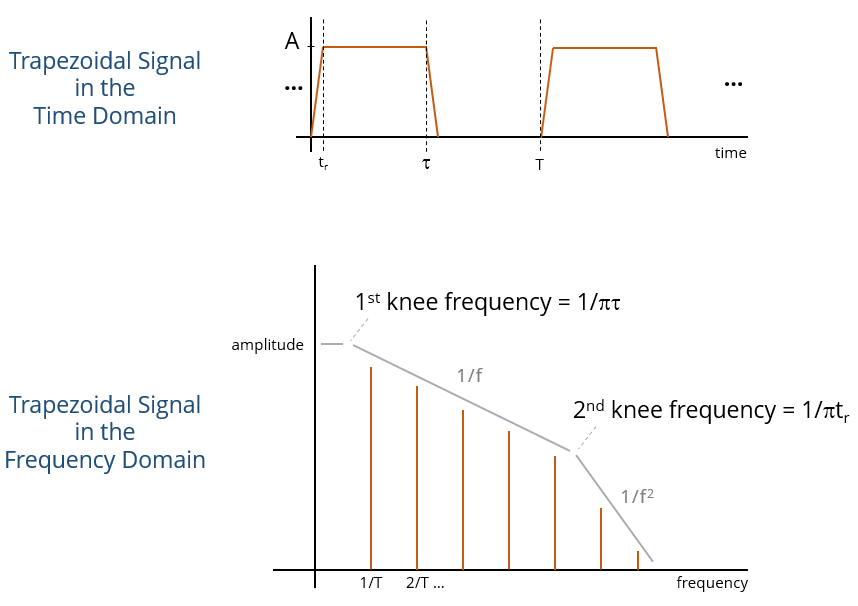EMC Question of the Week: July 26, 2021

For a trapezoidal digital signal waveform, the "knee frequency" above which harmonics begin decreasing by 40 dB/decade is
- 1/(πtr), where tr is the transition time
- 1/πT, where T is the period
- (10πtr)/T, where tr is the transition time and T is the period
- 2π/T, where T is the period
Answer
The best answer is “a.” Controlling the transition time, tr, is the best way to ensure that digital signals do not have more power at upper-harmonic frequencies than necessary to ensure reliable transmission of a digital signal. Typically, for digital signals at or above 5 Mbps, the transition time should be about 20% of the bit width. Transition times much faster than this significantly increase the power in the upper harmonics without significantly impacting the quality of the digital signal (e.g. the bit error rate).
At low data rates, a transition time that is 20% of the bit width can be too slow. For example, making the transition time much greater than 40 nsec (20% of the bit width at 5 Mbps) may cause the signal to spend too much time at levels near the high-low breakpoint where small amounts of noise may trigger false transitions in the receiver. The optimum transition time will depend on the application, but generally transition times between 30 and 50 nsec are considered "slow enough" to avoid many of the conducted and radiated emissions problems caused by uncontrolled transition times in digital signals.
Have a comment or question regarding this solution? We'd like to hear from you. Email us at
